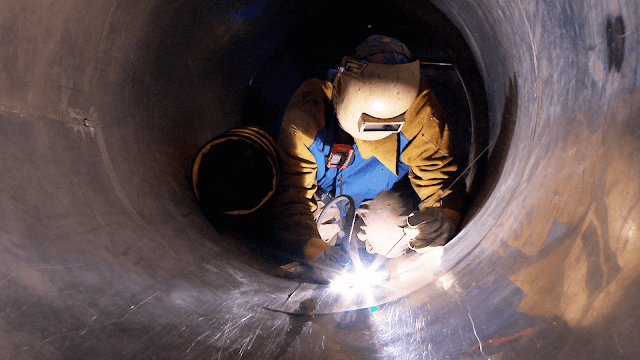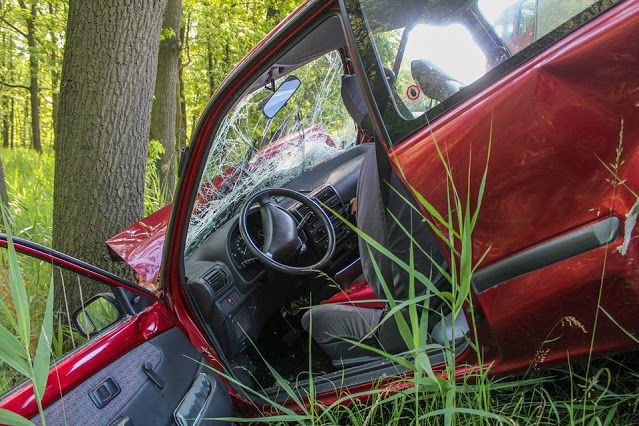Safety Talks: Excavation Hazards and Risk Control
Excavation or trench is a manmade cavity required to perform
various kind of jobs like building foundation, reservoirs, making roads in construction,
oil and gas or in several other service industries however working in excavation
is a hazardous job, workers working in excavation may face different risk
factors an excavation is any man-made cut into the earth's surface formed by
earth removal, a trench is a narrow excavation with a depth greater than its
width but is no wider than 15 feet using protective systems and safe work
practices can minimize trenching hazards for workers.

Picture: Excavation in progress at a Mining Site
The biggest risk workers face during trenching and excavation work
is the risk of death from soil caving in but other potential hazards do exist
including workers falling into a trench hazardous atmospheres caused by toxic gases
fumes or vapors entering the trench materials or objects falling into an
excavation such as dirt removed from a trench or tools and materials damaged underground
utilities that can expose workers to explosive or hazardous atmospheres or electrocution
or even drowning and incidents involving mobile equipment such as being struck
by an excavator to minimize these hazards pre-planning must take place prior to
digging to ensure safe trenching and excavation operations before beginning any
excavation a jobsite evaluation must be conducted by a competent person which
includes evaluating soil conditions to determine their stability locating and
marking existing underground utilities.

Picture: a worker doing manual trenching on a site
Before you dig service choosing the proper protective systems to prevent cave-ins providing a safe means of entering and exiting the trench or excavation testing for hazardous atmospheres inside the trench identifying overhead power lines and maintaining proper safe distances and planning for traffic control near the work area the competent person is responsible for the safety of workers in a trench or excavation and must inspect them daily to identify and eliminate any hazardous conditions before any worker can even enter this is because the conditions of the trench may change daily such as after a rainstorm weight of soil can vary but a good rule of thumb is that one cubic yard of soil can weigh approximately 3 000 pounds and dirt falling 6 feet can hit a worker with as much force as a pickup truck going 35 miles per hour therefore all workers who enter a trench or excavation more than five feet deep must be protected by sloping or benching of the earth or by shoring or shielding under the direction of the competent person.
Let's take a look at each protective system sloping involves
cutting back the trench wall at an angle inclined away from the excavation unless
a trench is in solid rock the walls shouldn't be vertical without support if the
dirt is granular and breaks up easily the trench wall needs to be sloped back farther
than if the trench were in clay or more stable material for trenches up to 20
feet in depth you'll need a slope of one and a half feet back for every one
foot down or 34 degrees in type c soil which is granular sandy and the least stable
this includes most previously disturbed soils the maximum allowable slope is 1
to 1 or a 45 degree angle for soils that meet type b requirements and the
maximum slope for type a soils such as clay is three quarters to 1 or an angle of
53 degrees benching is like sloping but the sides are vertical and then cut
like steps just like sloping this method depends on the type and condition of
the dirt you can sometimes use a combination of sloping and benching but benching
cannot be done in type c soil a lot of jobs have very limited space and don't
have room to slope or bench the sides of the soil back that's when protection
like shielding or shoring should be used hydraulic shoring may be used on the
job instead of sloping this pre-fabricated strut and whale system manufactured
from aluminum or steel that supports the faces of the trench is designed to
prevent cave-ins.

Picture: A Hyundai Excavator digging for deployment of underground telecom services
All hydraulic shoring must be designed and set up in accordance
with osha regulations manufacturer specifications or engineers designs if the
trench is five feet or deeper hydraulic shores must be installed and removed
without workers entering the trench a trench box or shield is another option to
keep the walls from collapsing trench boxes are a frequently used protective
system for utility line installations such as lateral lines they also provide
protection to workers inside the trench when sloping cannot be used it's usually
one piece so it's easier to install than other shoring systems once the trench
is dug the box is placed in the hole and the sides of the box support the walls
of the trench the box should be in good condition and be the right kind for the
depth and soil type of the trench when they are used correctly the sides will be
secure keep workers safe inside the protective system regardless of the type of
trench or excavation following these additional work practices will help ensure
the safety of workers provide a safe way to enter and exit a trench or
excavation that is four feet or deeper such as with ladders steps or ramps.
If you use a ladder make sure it's no more than 25 feet away from
you so you can get to it quickly when needed keep excavated dirt called spoils
as well as materials and heavy equipment back a minimum of two feet from the
edge of a trench to prevent anything from falling into it never enter a trench unless
it has been inspected by a carpeted person or until there is a safe way to
enter or exit other high visibility materials when working near moving
equipment or vehicles and do not stand beneath loads handled by lifting or digging
equipment keep heavy equipment away from trench edges and identify other
sources that might affect trench stability locate and mark the exact location
of underground utilities such as sewer water telephone or electric lines prior
to digging keep a safe distance when working near overhead power lines and use
a spotter for any hard to see separation distances or in tight areas install a
barricade or fence around
trenches or excavations that are left open to prevent
unauthorized access remember incidents involving trench and excavation hazards can
often be fatal so it's important to take all necessary precautions.


Comments
Post a Comment